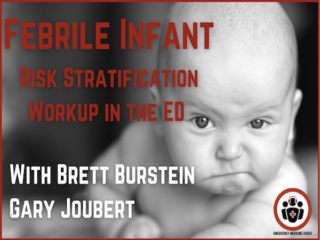Ep 173 Febrile Infant – Risk Stratification and Workup
In this main episode podcast on ED risk stratification and workup of the febrile infant, recorded at the CAEP 2022 Conference in Quebec City with Dr. Brett Burstein and Dr. Gary Joubert, we answer such questions as: Which febrile infants require lumbar puncture? How accurate is procalcitonin in identifying low risk febrile infants? What is the difference between serious bacterial infection (SBI) and invasive bacterial infection (IBI) and why is this important in the work up of the febrile infant? How do the PECARN, Step-by-Step and Aronson decision tools for identifying febrile infants at low risk for IBI and SBI? Can EM Cases incorporate all these decision tools and the upcoming Canadian Pediatric Society position statement on febrile infants recommendations into one concise algorithm? and many more...


